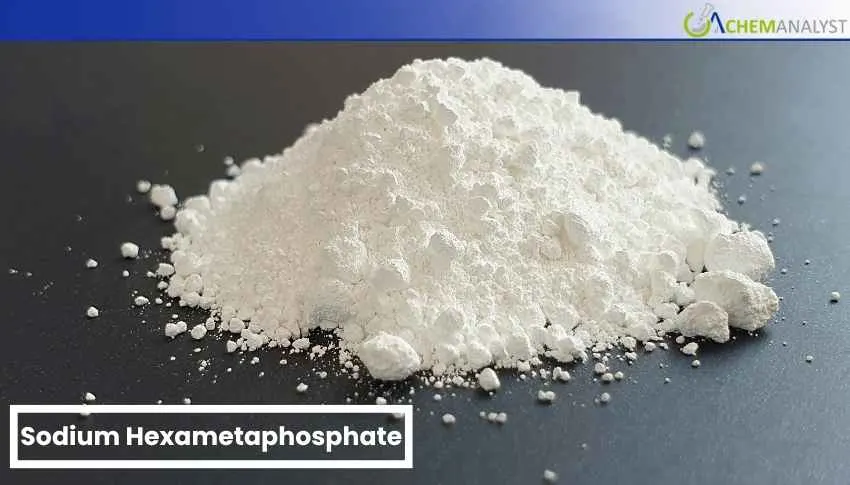Welcome To ChemAnalyst

September 2025 Sodium hexametaphosphate (SHMP) prices fell both in India and China. Falling soft upstream costs, cautious downstream buying, and subdued export sentiment contributed to the weakness, as market direction was determined by policy changes, festive demand, and freight flows.
SHMP prices in China weakened during September under the impact of eroding cost support and slack domestic demand. The decrease in phosphoric acid price eroded production cost support, with producers having limited room for price manoeuvring.
Trading in the domestic market remained weak, with buyers opting for low-priced purchase tactics prior to the Golden Week holidays. This cautious approach accumulated inventory pressure on SHMP producers, leading to small price concessions to create shipments.
Apart from holiday-induced slowdowns, overall industrial activity in China remained unbalanced. While some of the downstream industries such as ceramics and water treatment saw seasonal stability, SHMP demand from the producers of cleaning products continued to remain sluggish. Some converters operated at reduced capacity, blaming inventory build-ups and lacklustre retail movement.
Export demand likewise did not offer relief, especially from European buyers who postponed Q4 contract commitments in face of plentiful material availability and unimpressive spot market business. As most players were focused on inventory reduction rather than forward purchasing, SHMP market sentiment was guarded, and transactional volumes were low.
India mirrored China's price trend, and prices dropped in September for SHMP under the influence of steady import arrivals and lacklustre downstream demand. Supplies remained uninterrupted, backed by firm deliveries from China, the key material source. Favourable freight economics—supported by the drop in Drewry's Intra-Asia Container Index—helped decrease landed costs for Indian buyers, maintaining the poor pricing environment.
SHMP demand from key downstream uses such as personal care, detergents, and cleaning products remained subdued. Major FMCG players such as HUL, Dabur, and Marico posted flat performance in July and August but were impacted by trade disruptions in September due to the rollout of GST 2.0 reforms.
The reduced duties on essentials of daily needs under the new tax regime, announced on Sept. 4, prompted consumers to defer purchases expecting lower prices. This short-term shift in buying behaviour had repercussions on retail sales and procurement volumes, leading to reduced demand for SHMP used in surfactant and cleaning goods.
In the near term, Indian and Chinese SHMP prices will likely remain pressured, though selective bounce-back of demand can be expected. In China, holiday restocking may help prop up, while export sentiments are expected to remain weak.
Demand in India is anticipated to gain momentum during the upcoming festive season, driving demand for cleaning and personal care products. Further, with monsoon season finally over, municipal water treatment programs are also set to resume, hopefully also providing a fillip to SHMP demand in industrial application.
Overall, SHMP market is expected to remain within a tight pricing bracket in initial Q4, driven by cautious purchasing and sector-wise relative shifts in demand.
We use cookies to deliver the best possible experience on our website. To learn more, visit our Privacy Policy. By continuing to use this site or by closing this box, you consent to our use of cookies. More info.
